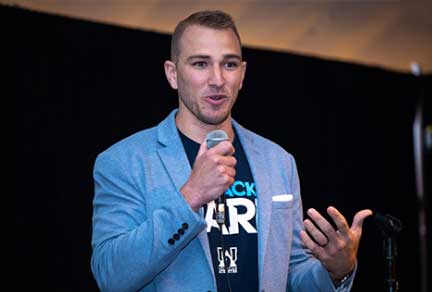As more neuroscience drugs are approved, the value proposition takes center stage
Regulatory change typically proceeds slowly. However, in neuroscience, the landscape is changing quickly, and the FDA is significantly more progressive today than it was five years ago. It granted accelerated approval to two drugs for neurologic disorders in 2023: Qalsody for amyotrophic lateral sclerosis (ALS) and Elevidys for Duchenne Muscular Dystrophy (DMD). Both used novel surrogate endpoints. In 2022, it approved Relyvrio for ALS, applying broad flexibility to balance limited efficacy evidence against patients’ unmet needs.
However, new neuroscience drugs won’t reach patients unless they are supported by data packages that satisfy health technology assessment (HTA) agencies and payers in diverse markets. For example, while the UK and Canada consider cost-effectiveness (CE) a key criterion for reimbursement, Germany and France scrutinize clinical effectiveness versus the current standard of care. Others, like the United States, focus primarily on a new therapy’s overall healthcare budget impact.
As a result, manufacturers must establish the value proposition early, substantiate it with well-designed Phase 2 and 3 trials, and sustain it with a post-marketing clinical program that includes long-term extension studies and real-world data (RWD) collection. HTA agencies and payers must be able to see clear evidence of the product’s value to make decisions.
It is essential to differentiate new drugs in crowded markets
As more neuroscience treatments are approved, sponsors must differentiate their products and tell a cohesive, compelling value story supported by evidence. For example, the FDA has approved more than 20 drugs to treat relapsing forms of multiple sclerosis (MS). In February 2023, the U.S.-based Institute for Clinical and Economic Review (ICER) analyzed 13 first-line disease-modifying therapies for MS. It concluded that the most recent market entry, Briumvi, represents “low” long-term value for money.
The EMA has approved roughly the same number of MS drugs as the FDA. However, a recent report comparing reimbursement decisions by the German, French, and Spanish HTA agencies found they disagreed on their therapeutic value. Such disparities could be troublesome as the EU moves toward a centralized HTA process based on Joint Clinical Assessments (JCAs).
How can sponsors demonstrate value in a dynamic, increasingly crowded neuroscience marketplace? At Parexel, we advise clients to:
1. Tell a cross-disciplinary value story
A product value proposition that can convince regulators, payers, providers, and patients requires multi-disciplinary expertise and evidence. Regulatory, clinical, medical affairs, scientific affairs, market access, health economics, commercial, and others—such as the increasingly critical digital solutions teams—must work together from day one. In our experience, close collaboration increases the likelihood that new treatments satisfy the needs of regulators, HTA agencies, and payers and, most importantly, deliver meaningful benefits to patients.
Guidance from external experts and early scientific advice from regulators, HTA bodies, and joint regulatory-HTA programs are more valuable if incorporated before the start of Phase 2 trials. For example, we recently analyzed 19 negative reimbursement decisions in England and Canada from 2021-2022 and found that poor CE and trial design were the top reasons cited for denials. Sponsors might have avoided these pitfalls if they had sought joint advice from the UK’s National Institute for Health and Care Excellence and the Canadian Agency for Drugs and Technology in Health.
Once pivotal trials demonstrate safety and efficacy, a new product will likely be approved by regulators. But to convince HTA assessors of a product’s added clinical value in a competitive treatment landscape, market access teams need a say in designing clinical trial protocols and choosing endpoints. Will the primary and secondary endpoints resonate with HTA agencies and be meaningful to patients? Can they accurately measure disease management improvements (not just whether the condition progresses)? Will they differentiate the product from other available treatments?
By coordinating internal teams and external input early enough, companies may achieve more efficient development that generates the evidence needed for all stakeholders. For example, in rare neuromuscular diseases such as DMD, traditional clinical endpoints do not fully capture the disease trajectory or assess relevant improvements in symptoms and manifestations. Since caregiving is a familial and financial burden for DMD patients, measuring it in trials could be key. However, working with patients, caregivers, patient advocacy groups, clinicians, and regulators is essential to understand how to construct and validate a novel endpoint to capture changes in caregiving burden. The process takes time, and manufacturers must start it early in development.
2. Quantify and segment unmet needs with patient input
Healthcare providers and payers often perceive a low unmet need when abundant treatment choices exist. In these instances, sponsors must quantify unmet needs with compelling evidence.
Patients are critical to identifying and quantifying unmet needs because they are the ultimate consumers of medicines and treatments. They are experts in their disease journey and know which outcomes matter to them. For example, we recently surveyed patients with amyloidosis, a rare disease that leads to degeneration and dysfunction of the nervous system. The data revealed that patients with Stage 1 or 2 disease required one caregiver, but those with Stage 3 required two. Products that lessen this substantial financial and family burden could satisfy an unmet need.
At Parexel, we help many sponsors engage with patients and caregivers to understand the impact of diseases and potential treatments on their quality of life (QoL). Traditional QoL measures used in clinical trials don’t always capture benefits.
For example, DMD clinical trials have historically focused on lower limb mobility, measured with the six-minute walk test. However, patients say DMD’s impact on upper limb function is also meaningful. That insight requires quantifying the effect of a treatment on the upper limbs.
An unmet need must be quantified and segmented. Patient and caregiver surveys can substantiate nuances in quality of life, disease burden, and resourcing needs. We advise clients to adopt an intentional strategy to ensure pre- and post-marketing trials enroll patients from diverse racial, ethnic, and cultural backgrounds and measure QoL in relevant populations.
3. Collect high-quality patient-reported outcome data
Patient-reported outcomes (PROs) are essential for measuring how a patient feels and functions without editing or interpretation by a physician or caregiver. As a result, many companies spend time and effort collecting these data in pivotal efficacy trials. However, quality matters: regulators and payers scrutinize PRO data and methodology.
A recent Parexel analysis of FDA clinical review documents for 164 novel drugs and biologics approved from 2017-20221 revealed that although 63% of sponsors collected PRO data, just 13% got it on the label. Frequent problems cited by agency reviewers included missing data, lack of a prespecified statistical analysis plan, potential for bias in open-label studies, and unvalidated PRO instruments.
Selecting relevant PRO tools—and collecting and analyzing the data with sufficient rigor for regulators and payers—is challenging for any clinical outcome assessment (COA). Aggregating and analyzing disparate primary (electronic data captured at a study site) and secondary data (national or disease-specific patient registries, electronic health records, hospital chart reviews, and so on) is complicated. Companies must choose the appropriate sources and models to build an interpretable hybrid dataset.
Recently, we mapped out an early value demonstration strategy for a client with an oral immunomodulatory drug. The company was seeking a label expansion for a rare neuromuscular disorder, and the product will enter a congested market when it debuts in several years. Fortunately, the sponsor sought advice on a real-world data strategy—including relevant and defensible COAs—before initiating Phase 3 trials. We proposed starting with a targeted literature review to identify evidence gaps, followed by a comprehensive assessment of prior HTA decisions in the target indication and related conditions. Then, we planned a series of workshops to seek input from internal and external experts, supplemented by in-depth interviews. Finally, we built in layered reviews by multiple stakeholders to validate the evidence plan.
4. Plan for sustained post-marketing data collection
An effective plan for post-marketing data collection balances patient interests, emerging science, and prudent use of national healthcare budgets. It’s a continuous effort that spans the pre-, peri-and post-launch periods of an asset’s lifecycle.
Neuroscience drugs present unique challenges because the economic model structure is not as simple as for life-threatening diseases such as cancer. Cancer patients either live disease-free, live with progressing diseases or die. Neurological disorders are typically not a matter of life and death: patients may live for years with disease-related disabilities, such as severe fatigue, that will impose heavy personal, social, financial, and medical burdens.
Modeling and capturing the economic value of a new neuroscience treatment requires close collaboration between the health economics and medical teams. An informative model demonstrates a disease’s trajectory and impact on the patient’s QoL in clear, understandable metrics, vital for rare diseases, which payers may be less familiar with. It also captures improvements in those metrics, in the form of endpoints, that resonate with payers. The choice of endpoints—traditionally made by medical experts—is thus critical to demonstrating the economic value of new treatments. Health economists and medics must together find endpoints that balance clinical efficacy and safety to satisfy regulators with meaningful improvements for patients and economic value to convince payers.
5. Anticipate the impact of new EU and US legislation
The European Network for Health Technology Assessment (EUnetHTA) will begin performing JCA procedures for new products in 2025.2 Meanwhile, for the first time in the United States, the Inflation Reduction Act of 2022 authorized Medicare to negotiate prices directly with biopharmaceutical companies starting in 2023 and 2024, with negotiated prices taking effect in 2026.6 These developments are changing the evidentiary thresholds and pricing landscape for new and existing products on both continents.
In Europe, HTA agencies determine market access. Reimbursement decisions are driven by several factors: whether a new product addresses an unmet need, the magnitude and durability of clinical benefits, whether it is affordable, and whether it is good value for Europe’s healthcare systems. Countries with HTA agencies follow their own methodological guidelines and criteria for assessing new pharmaceuticals. However, it is unclear whether the JCA will align with national practices. A recent Parexel analysis compared the proposed EUnetHTA21 methodology with national standards in 12 domains, such as the acceptability of surrogate endpoints and QoL data, and found substantial variability between the agencies. Companies preparing for JCA submissions in 2025 must precisely understand the assessment methodology to ensure a positive outcome. A negative JCA will impact national HTA outcomes and pricing negotiations with individual markets.
Medicare’s new powers in the United States mean an increased focus on fair pricing. That, combined with the increasing influence of ICER, has altered the market landscape. Companies should expect US arbiters of cost-effectiveness, such as ICER, to follow Europe’s lead. At Parexel, we advise companies to prepare for scrutiny of pricing negotiations with robust data and well-developed arguments.
Patient-focused drug development aims to deliver new products that regulators approve, payers reimburse, and benefit patients. Investing time, effort, and money in a comprehensive strategy from the beginning of drug development may seem expensive and premature. Still, it can save time and money in the long run.
Achieve your goals with our full-coverage neuroscience practice
Neuroscience trials demand tight collaboration between sponsors, clinical research organizations, and investigative sites. Parexel has worked on 500 neuroscience clinical and consulting projects in the past five years, enrolling over 60,000 patients at 3,500 sites. We bring expertise in adaptive designs, the use of external control arms, real-world evidence, biomarkers, diagnostic adjudication, and signal detection strategies. Endpoints in neuroscience trials can be influenced by many factors, including placebo effects, investigator biases, and patient expectations. We use continuous quality control, grounded in extensive global medical expertise, to maximize every patient’s contributions across the development journey, from Early Phase to Phase IV trials. Our team of board-certified neurologists and psychiatrists, global regulatory consultants, and experienced clinical research associates work closely with sites to improve staff qualification and training, patient selection, eligibility decisions, and instream monitoring of study conduct and data quality.
Do you want to achieve your goals with our full-coverage neuroscience practice? Find out more.
To hear from Parexel experts on the latest topics in neuroscience, visit our Insights Center to read, watch, and listen.
About the authors
Andreas has over 15 years of experience as a clinical neurologist with neuroimmunology and multiple sclerosis (MS) expertise and senior executive leadership in pharma. Before joining Parexel, he was head of Global Medical Affairs in Neuroscience with Ipsen and Director of Medical Affairs Europe, MS with Sanofi Genzyme. Andreas formerly led the Neuroimmunology Unit at University Hospital in Brussels, Belgium, and served as a principal investigator in global Phase II-IV clinical studies. He co-founded ParadigMS, an organization dedicated to improving MS patient care. Andreas works with Parexel clients to create effective development strategies. With the plan in place, he and his team lead all aspects of execution to ensure that neurological assets are approved quickly and efficiently.
Ola is a senior consultant in Parexel’s Pricing and Market Access practice. Her academic background in molecular genetics, including work at the Francis Crick Institute in London, helps her problem-solve for clients tackling complex neuroscience clinical trials and devise evidence-generation strategies that deliver drugs to the patients who need them.
References
1 Numbers include original new drug applications (NDAs) and biological license applications (BLAs) only, not supplemental applications (label extensions or new formulations). The dataset includes only orphan-designated products that achieved U.S. licensure for the first time between 2017 and 2022 and contained a new molecular entity or new active moiety. For CBER approvals, we excluded assays, fractionated plasma products, patch tests, reagents, vaccines, and tissue transplant products.
2 Regulation 2021/2282 on Health Technology Assessment.
Related Insights
Blog
Opportunities and strategies for accelerating patient access to treatments for Alzheimer’s disease
Feb 23, 2024
Webinar
Investor-ready strategy: Integrated evidence planning to maximize commercial opportunity
Sep 17, 2025
Playbook
Are you using real-world evidence?
Feb 1, 2023
Blog
Regulatory considerations in designing clinical trials for Alzheimer’s disease
Jan 24, 2024
Blog
Building a program for patient-guided clinical research for Alzheimer’s disease
Jan 24, 2024
Report
New Medicines, Novel Insights: Achieving patient-guided drug development
Oct 30, 2023
Blog
Newly released FDA data and approvals signal a more welcoming regulatory environment for neuroscience clinical trials
Oct 3, 2023
Blog
Early Scientific Advice in cost effectiveness markets – how to navigate it and is it worth it?
Jun 14, 2023
Report
New Medicines, Novel Insights: Accelerating development of cell and gene therapies
May 22, 2023
Report
New Medicines, Novel Insights: Advancing rare disease drug development
May 22, 2023
Whitepaper
The Chinese Pharmaceutical Market: Size, R&D, Regulations, Market Access and Innovations
Mar 9, 2023
Blog
Innovative modeling method could speed patient access to critical IO therapies
Jan 4, 2023
Related Insights
Blog
Opportunities and strategies for accelerating patient access to treatments for Alzheimer’s disease
Feb 23, 2024
Webinar
Investor-ready strategy: Integrated evidence planning to maximize commercial opportunity
Sep 17, 2025
Playbook
Are you using real-world evidence?
Feb 1, 2023
Blog
Regulatory considerations in designing clinical trials for Alzheimer’s disease
Jan 24, 2024
Blog
Building a program for patient-guided clinical research for Alzheimer’s disease
Jan 24, 2024
Report
New Medicines, Novel Insights: Achieving patient-guided drug development
Oct 30, 2023
Blog
Newly released FDA data and approvals signal a more welcoming regulatory environment for neuroscience clinical trials
Oct 3, 2023
Blog
Early Scientific Advice in cost effectiveness markets – how to navigate it and is it worth it?
Jun 14, 2023
Report
New Medicines, Novel Insights: Accelerating development of cell and gene therapies
May 22, 2023
Report
New Medicines, Novel Insights: Advancing rare disease drug development
May 22, 2023
Whitepaper
The Chinese Pharmaceutical Market: Size, R&D, Regulations, Market Access and Innovations
Mar 9, 2023
Blog
Innovative modeling method could speed patient access to critical IO therapies
Jan 4, 2023



